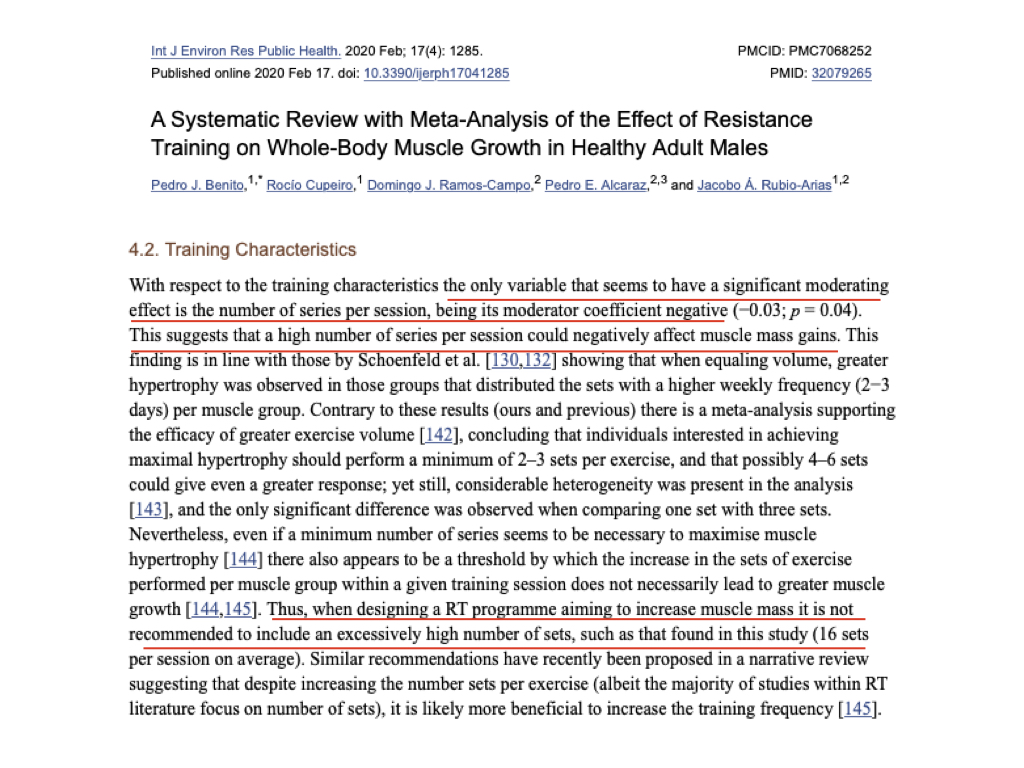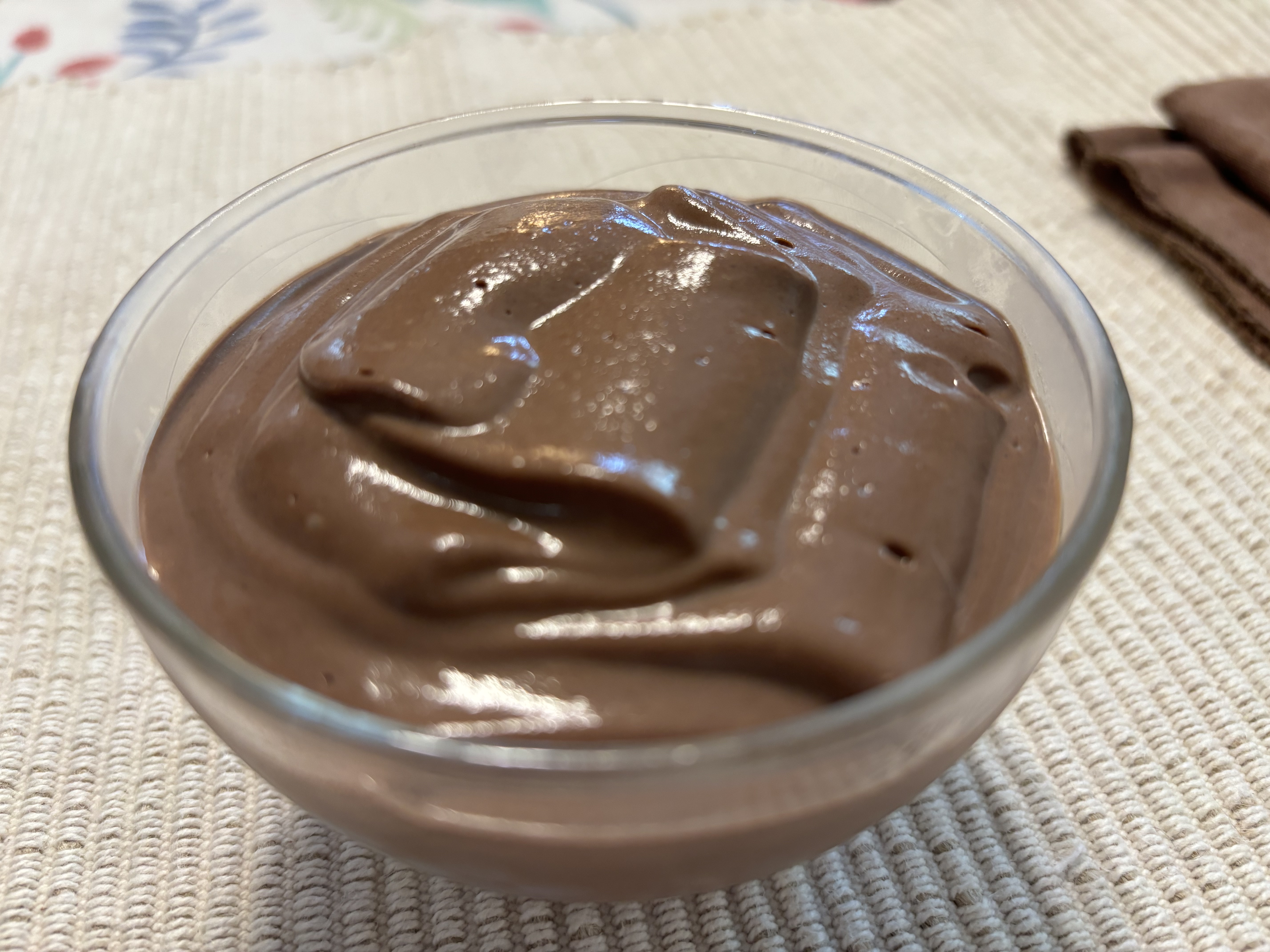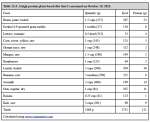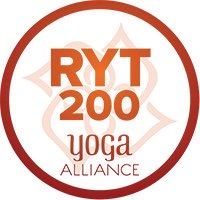Study: Excess Training Volume Reduces Muscle Growth
Excess training volume reduces muscle growth. Arthur Jones explained this in his first Nautilus Bulletin:
|
"Best results will always be produced by the minimum amount of exercise that imposes the maximum amount of growth stimulation.” And any other exercise that is added to the training routine will actually retard progress –– in many cases reducing it by as much as ninety percent (90%), and if carried to extremes, additional exercise will result in losses in both strength and muscular size." |
Nevertheless, there remain among us a host of academics who claim, on the contrary, that more is better. The "more is better" team believes there is no such thing as excess training volume and dominates the narrative of academic exercise science.
In an opinion piece entitled Volume for Muscle Hypertrophy and Health Outcomes: The Most Effective Variable in Resistance Training,1 Figueiredo and colleagues assert that “volume is the most easily modifiable variable that has the most evidence-based response with important repercussions, be those muscle hypertrophy or health-related outcomes,” “increasing training volume may be the most easily modifiable variable causing beneficial adaptations in an exercise program,” and the crown:
|
“The literature has convincingly shown that the volume of resistance training has a dose-response effect on muscle hypertrophy and health outcomes, and that the doses causing a ceiling effect or even detrimental effects are currently unknown.” |
As an IART Fitness Clinician, logician, and health care provider knowledgable of basic biology and toxicology, I know "more is better" does not apply to any thing known to man. All things become toxic at some dose.
For example, although the skin and general health benefit from a specific dose sun exposure, it is not true that the more time you spend exposing your skin to sunlight (ultraviolet light stress) the better the outcomes for skin structure and health. Overdosing on sun exposure results in degenerative changes in the skin due to limits on the skin’s ability to adapt to the stress applied.
 |
Exercise is no different. It is strong medicine, and as such, can be overdosed with adverse effects. IART Fitness Clinicians use the theory of Prescribed Exercise to adjust the dose of exercise to the needs and tolerance of the individual, in order to avoid excess training volume and obtain desired outcomes without adverse effects. |
"More is better" is a failed concept, yet it persists. I have previously discussed significant problems with one of the frequently cited studies purporting to show that increasing resistance training volume will increase muscle hypertrophy.
Now, at long last, a glimmer of sanity may have reached academic exercise science. Benito and colleagues have published a systematic review and meta-analysis of the effect of resistance training on muscle growth in adult males which confirms that excess training volume is a negative factor that impairs muscle growth.2
Excess Training Volume Reduces Growth
Benito and colleagues analyzed 111 studies of resistance training, seeking to identify factors which could moderate (reduce) the growth of muscle in healthy adult men. They analyzed the following variables to find out which if any had notable bearing on hypertrophy from resistance training:
- age
- weight
- height
- study duration (weeks)
- sessions
- days per week
- number of exercises per workout
- rest between exercise
- number of sets per workout
- repetitions range
- training duration (minutes)
- average load as %1RM
The types of training included in the data set were:
- circuit training
- full body
- split routing
- lower limbs only
- military training
The training sessions last from 4 to 24 weeks. Frequency varied from 2 to 6 days per week. Training sessions varied from 1 to 20 different exercises, 1 to 50 sets per exercise, 2 to 15 repetitions per set, and loads from 50 to 89% of 1RM.
Upon analysis of all the data, they found only one factor associated with reduced muscle growth: excess training volume. Evidently, use of 16 sets per session was the excess training volume associated with reduced muscle growth.

Benito and colleagues state that "the only variable that seems to have a significant moderating effect is the number of series [sets] per session." They conclude that when designing a resistance training program aiming to increase muscle mass it is not recommended to include an excessively high number of sets, found in this study to be an average of 16 sets per session.
It is not clear whether they are referring to the total number of sets in a session including all exercises, or only the total number of sets per muscle group. However, since many of these training studies include only one exercise or muscle group, and every set done increases recovery requirements, I suspect this finding implies that a training volume of 16 TOTAL sets per session constitutes excess training volume, when those sets are done in the typical fashion.
Quality Training Beats Quantity Training, Every Time
It is a physiological fact that training intensity and training volume are inversely related. Simply, you can train hard, or you can train for a long time, but you can't train hard and long.
If you plan to do 16 sets of one exercise––let's say deep knee bends––in a training session, you absolutely must make the vast majority of those sets easy training. And that's how it goes in these training studies that claim big benefits for high volume training. The subjects use short repetition durations––typically ~2 seconds–– that reduce muscle tension by introducing momentum and elastic forces, and they do not continue performing repetitions until they can not perform a concentric repetition in good form, but terminate most sets far from failure. The fast motion enables them to quickly pass through the most difficult regions of the range of motion riding on momentum. If they do 10 repetitions their muscles are under only a low degree of tension for only 20 seconds per set.
Its unlikely anyone would be able or want to complete 16 sets of 10 repetitions of any one exercise if using precision exercise performance and a set TUT tailored to individual muscle fiber type. If you use a 4 second eccentric, a 3 second concentric, and a 2 second pause in the most difficult position of the range of motion, each set will take 90 seconds, 4.5 times as much TUT as the typical 10 rep set. The muscles are under tension continuously. The fatigue after the set far surpasses that produced by a set of 10 completed in 20 seconds.
Just one set performed in this fashion will involve almost as much total TUT as 5 poor quality sets, and probably at least several times as much time under high tension in the most difficult portions of the range of motion. If you train to momentary muscular failure on the first set performed in this manner, you will not be able to match the first set on any subsequent set done within 5 minutes of the previous. In order to continue to achieve 10 repetitions on each set, you would have to substantially reduce the resistance set after set. I am certain you will not need or benefit from more than 3 sets performed in this manner for any given muscle group.
Volume advocates who don't believe there is any such thing as excessive training volume evidently don’t realize that because every repetition takes a certain amount of time, volume accounted by repetitions is simply an unreliable way of measuring TUT (unreliable because you can increase TUT while decreasing repetitions). If you perform typical short duration repetitions and sets, single sets do not produce much muscle fatigue. As I just explained, you might need to perform 4-5 of these poor quality sets to equal one high quality set.
Once you increase the quality of your training in this fashion, you will realize quickly why excessive training volume reduces muscle size gains. Simply, every properly done set deeply fatigues not only the trained muscles but also your body as a whole. The more sets you do, the more fatigue you accumulate, and the longer it will take to recover from the training session. Your body will not build muscle until after it recovers the resources spent and reverses the fatigue. If you can't/don't recover from the session, you won't build muscle. Thus training volume is a negative factor and a rational approach to training seeks the minimal dose necessary to achieve the desired outcomes.
Consider the time investment involved in performing 10 typical 10-repetition sets of just three different exercises––say squat, push ups and pull ups––in a single session. At 2 seconds per repetition, each set takes 20 seconds and all 30 sets will take 600 seconds (10 minutes). Add 3 minutes of rest between sets and 10 minutes for set up and closing and you have an additional 94 minutes spent, for a total of 104 minutes, 90% of which is spent resting rather than exercising. (I'm leaving out time spent traveling to and from the gym.)
We all have limited lifetimes. When you get to the end of your life, are you likely to wish that you had spent far more time than actually necessary doing repetitions and sets of resistance training, which excess training volume actually amounts to unpaid and unproductive manual labor?
If there are any benefits to increased volume, they are marginal. Benito and colleagues noted that there is a meta-analysis claiming to support the efficacy of increased resistance training volume, which concluded that individuals seeking maximal muscle growth should perform a minimum of 2-3 sets per exercise, and possibly 4-6 sets, but the analysis had considerable heterogeneity (as in the study I reviewed) and the only statistically significant difference was between 1 set and 3 sets as typically performed.3
Further, Morton and Phillips reported that multiple studies have revealed that increasing volume or volume-load by manipulating the number of sets per session, number of repetitions per set, number of sessions per week, or load lifted per repetition does not result in superior muscle growth. Perform excess training volume and you get nothing in return: no gains, no money, and nothing product of your labor!
Thus, if you have other things to do with your life, increasing training volume the usual way (adding poor quality sets) is not desirable on a cost-benefit basis because it produces no greater benefits but uses up irretrievable and limited time that one could otherwise spend on other valuable pursuits. Instead, improve the quality of your exercise performance to provide greater time under tension per set.
I have already described above how to perform precise, high quality repetitions. Beyond that, I highly recommend the JReps or zone training method for maximizing the quality of your training.
NOTES
1. Figueiredo VC, de Salles BF, Trajano GS. Volume for Muscle Hypertrophy and Health Outcomes: The Most Effective Variable in Resistance Training. Sports Med 2017 Oct 11DOI 10.1007/s40279-017-0793-0
2. Benito PJ, Cupeiro R, Ramos-Campo DJ, Alcaraz PE, Rubio-Arias JÁ. A Systematic Review with Meta-Analysis of the Effect of Resistance Training on Whole-Body Muscle Growth in Healthy Adult Males. Int J Environ Res Public Health. 2020;17(4):1285. Published 2020 Feb 17. doi:10.3390/ijerph17041285 <https://www.ncbi.nlm.nih.gov/pmc/articles/PMC7068252/>
3. Fisher J. Beware the Meta-Analysis: Is Multiple Set Training Really Better than Single Set Training for Muscle Hypertrophy? J. Exerc. Physiol. Online. 2012;15:23–30.
Recent Articles
-
Ancient Roman Soldier Diet
Apr 14, 25 05:19 PM
A discussion of the ancient Roman soldier diet, its staple foods and nutritional value, and a vegan minimalist version. -
High Protein Chocolate Tofu Pudding
Jul 01, 24 12:41 PM
A delicious high protein chocolate tofu pudding. -
Vegan Macrobiotic Diet For Psoriasis
Sep 05, 23 06:36 PM
Vegan macrobiotic diet for psoriasis. My progress healing psoriasis with a vegan macrobiotic diet. -
How Every Disease Develops
Aug 04, 23 06:22 PM
How every disease develops over time, according to macrobiotic medicine. -
Why Do People Quit Being Vegan?
Jun 28, 23 08:04 PM
Why do people quit being vegan? How peer pressure and ego conspire against vegans. -
Powered By Plants
Mar 16, 23 08:01 PM
Powered By Plants is a book in which I have presented a lot of scientific evidence that humans are designed by Nature for a whole foods plant-based diet. -
Carnism Versus Libertarianism
Dec 30, 22 01:55 PM
Carnism Versus Libertarianism is an e-book demonstrating that carnism is in principle incompatible with libertarianism, voluntaryism, and anarchism. -
The Most Dangerous Superstition Book Review
Nov 15, 22 08:46 PM
Review of the book The Most Dangerous Superstition by Larken Rose.














